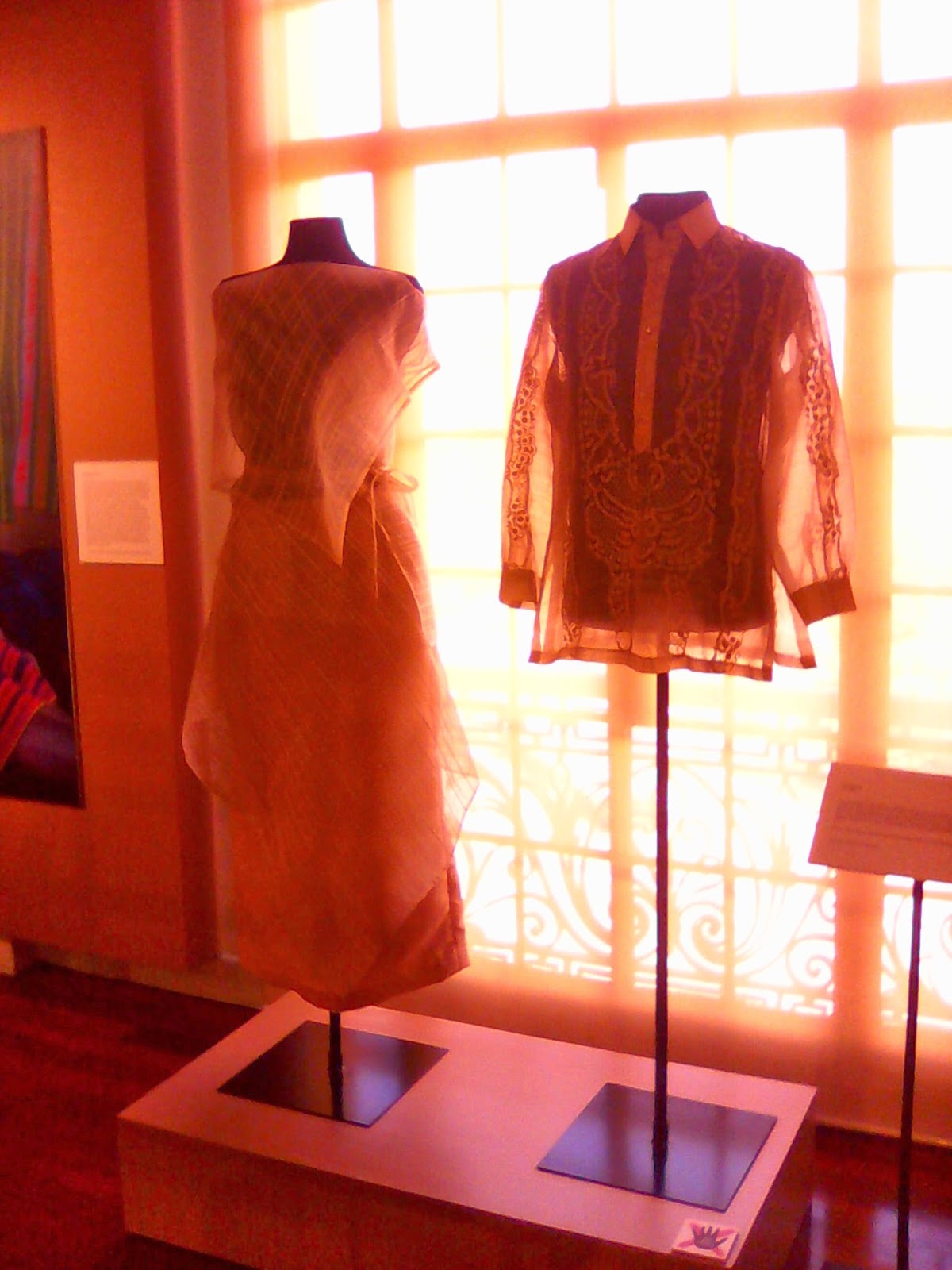On a recent tour assignment to the National Museum, I was pleasantly surprised to find that there has been some refurbishing and restoration/ renovation going on in both buildings. There have been new additions to the museum's collection and some new items have been placed either on permanent loan as well as some special exhibits.
In this instance, I did like the temporary exhibit of the Hibla ng Lahing Filipino Gallery on the fourth floor of the Museum of the Filipino People. Credit goes to Senator Loren Legarda for putting up a worthy collection on the Abel Ilokana in celebration of Women's Month. Clearly, the venerable senator has an advocacy for promoting things Filipino. Her fashion sense and style prompts her to don indigenous fabrics adapted to contemporary designs. She makes it a point to use locally woven fabrics for her clothes in most, if not all of her official functions.
The Abel Ilokana collection, sadly, will only last until the 30th of March. However, I feel that it's a creative way of highlighting the Filipino's long tradition of weaving. The Abel or Inabel is a type of sturdy cloth that has been part of the Ilocos region's way of life. It is the product of both tradition and function as the northerners tried to keep the art of weaving alive by passing on the knowledge and skill to the younger generation. The art was passed on from grandmother to daughter to granddaughter as most families kept looms in their households.
Formerly limited only to women, the art of weaving became a means not only to keep women modestly and stylishly dressed, it was also a source of wealth and income to support their families. The abel cloth was used not only for clothing but also for their homes as these were turned into table runners, blankets and even mosquito nets (depending on the fine quality of the weave and fibers). The men, nowadays have taken to weaving as well! As a matter of economics, the men have slowly infiltrated the art form once dominated by the Ilokanas. Their strength allows them to make tighter woven fabrics that are also stronger.
There were indeed times in my childhood when my grandmother would often remind us in the old Filipino proverb; "kung maigsi ang kumot, matuto'ng bumaluktot!" It was also a reference to a simpler way of life to try adapt to the curve-balls that life throws at you! How apropos, considering she would order blankets from Ilocos. Once banned from being exported to Spain, the inabel was considered a threat to the local Spanish weaving industry. Its sturdiness survived the gale force winds that moved the Spanish Galleons on their long voyage across the Pacific and so it was preferred and often used as sails. Of course, until now, those blankets from Ilocos are prized for their sturdiness.
I'm happy that Sen. Legarda was able to showcase the fine art of weaving in the north. Nowadays, the abel or inabel has taken on new applications for its use. Glad they re-discovered it before it becomes a dying art...







No comments:
Post a Comment